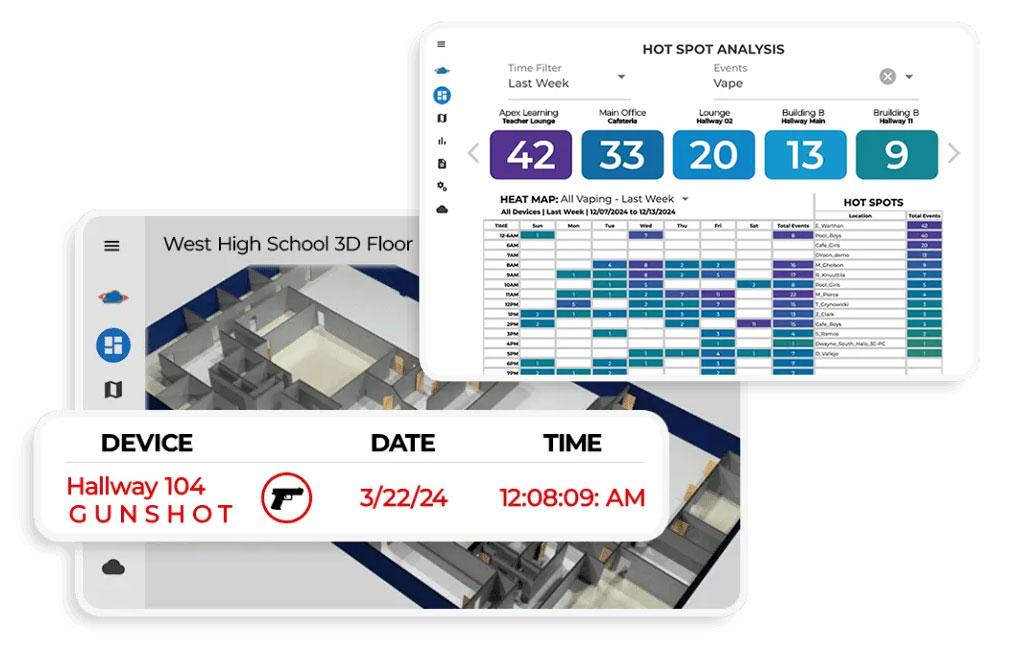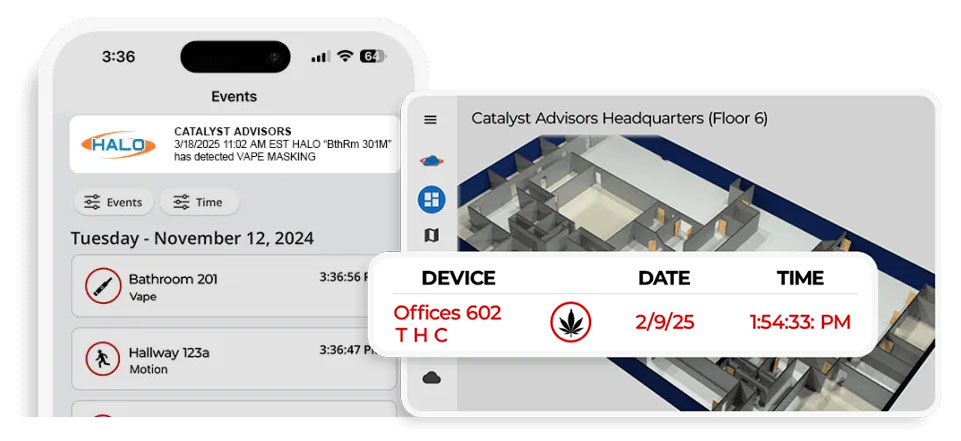
As schools and other educational facilities continue to use technology to bolster campus safety, smart sensors are emerging as a critical component in their playbooks.
When deployed properly, smart sensors can detect environmental changes, sounds, and motion, and provide real-time data that can help schools prevent and/or respond to emergencies.
Through built-in acoustic capabilities, smart sensors can accurately identify sounds such as gunshots, breaking glass, aggressive language and shouting, and immediately alert school officials and law enforcement. Environmental sensors can track air quality, smoke, or gas leaks, providing early warnings for fires or hazardous conditions. Additionally, motion sensors placed at entrances or restricted areas detect unauthorized access or suspicious behavior, especially during off-hours.

Smart sensors also provide accurate vape detection for schools.
Student vaping is a growing issue across the U.S. HALO smart sensors, for example, can detect vape, THC, smoke and more in privacy areas and notifies faculty in real-time.

The integration of smart sensors into school communications systems also enhances emergency response capabilities. When activated, sensors send alerts to mobile devices and guide students and staff to safety, and trigger lockdown protocols, sealing off designated safe zones and preventing access to certain areas while also limiting the movement of potential intruders and protects students and staff.
Additionally, smart sensors can track intruder locations and direct emergency services to the location.
By combining smart sensors with lockdown technologies, schools can significantly reduce response times during emergencies and create a safer environment for everyone on campus
In an era where school safety and preparedness are critical, smart sensors provide significant advantage toward creating an environment where students can focus on learning without fear





